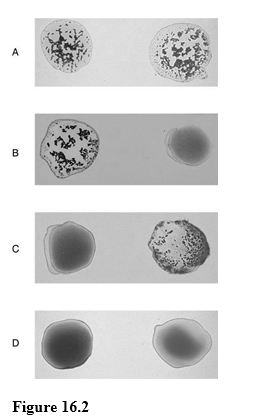Using Figure 16.2, match the following:

1) Type O.
2) Type A.
3) Type AB.
4) Type B.
5) Universal donor.
6) Universal recipient.
1) D
2) B
3) A
4) C
5) D
6) A
You might also like to view...
Answer the following statements true (T) or false (F)
1. An organ is a group of different types of cells that function together to perform a specific function. 2. A system is a group of organs arranged in such a way that they can perform a more complex function. 3. Stem cells may be able to be used for tissue or organ engineering. 4. The skin is the most important organ of the integumentary system. 5. Hair, nails, and teeth are called accessory structures of the skin.
The valve which prevents blood from returning to the left ventricle is the left atrioventricular valve.
a. true b. false
Oxygen has an atomic number of 8 and an atomic mass of 16. How many valence electrons does it have?
A. 6 B. 2 C. 16 D. 8 E. 4
How long does it take for humoral immunity to accomplish antibody production in the second exposure to the pathogen?
A. 2-5 days B. 13-16 days C. 3-6 days D. None of these are correct.